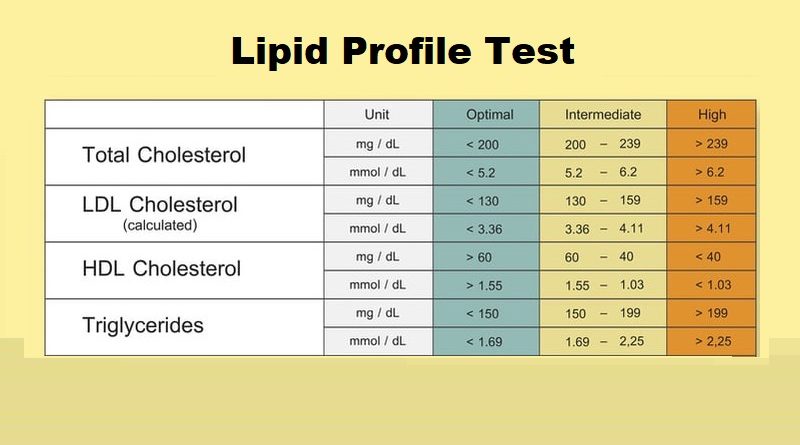Understanding Lipid Profile Test: What You Need to Know
A lipid profile laboratory test, one of the common blood tests, measures the levels of lipids in the blood. Lipids are essential components of the body that play a vital role in various functions, including energy storage, hormone production, and cell membrane structure. However, high levels of certain types of lipids can increase the risk of heart disease and other health problems. In this article, we will explore what a lipid profile laboratory test is, how it works, its requirements, and why it is essential for maintaining good health.
What is a Lipid Profile Laboratory Test?
It’s a blood test that measures the levels of several types of lipids in the blood, which are total cholesterol, high-density lipoprotein (HDL) cholesterol, low-density lipoprotein (LDL) cholesterol, and triglycerides. These lipids are measured to assess the risk of developing heart disease, stroke, and other cardiovascular problems.
How Does a Lipid Profile Laboratory Test Work?
During the test, a healthcare worker, (laboratory technician or a nurse), will draw a blood sample from a vein in your arm. The sample is then processed by a medical laboratory for analysis. Levels of total cholesterol, HDL cholesterol, LDL cholesterol, and triglycerides in the blood are measured. The results of the test will be put in a report as the total cholesterol level, the HDL cholesterol level, the LDL cholesterol level, and the triglyceride level.
Why is a Lipid Profile Important?
A lipid profile test is essential for maintaining good health. High levels of lipids can increase the risk of heart disease and other health problems. LDL high levels can cause plaque to build up in the arteries, leading to atherosclerosis. Triglycerides can increase the risk of heart disease and may be a sign of the metabolic syndrome.
Measuring the levels of lipids in the blood can help assess a patient’s risk of developing heart disease. Lifestyle changes, such as diet and exercise, can help manage lipid levels and reduce the risk of cardiovascular problems.
Pre-testing requirements
Before taking the test, there are several pre-testing requirements you should be aware of including:
- Fasting:
Fast for at least 9-12 hours before the test, which means avoiding food and beverages, except for water, during this time. - Medications:
Inform your doctor of any medications you are taking, as certain medications can affect lipid levels. Common medications that can affect lipid levels include statins, diuretics, beta-blockers, hormonal contraceptives, glucocorticoids, and immunosuppressants. - Exercise:
You should avoid vigorous exercise for 24 hours before the test, as exercise can temporarily raise lipid levels. - Alcohol:
Also, avoid alcohol for 24 hours before the test. Alcohol can affect lipid levels. - Smoking:
Avoid smoking for 24 hours before the test, as it can affect the results.
Normal Levels
The normal levels for the lipid profile laboratory test are as follows:
- Total cholesterol: Less than 200 mg/dL
- HDL cholesterol: 40 mg/dL or higher for men, 50 mg/dL or higher for women
- LDL cholesterol: Less than 100 mg/dL
- Triglycerides: Less than 150 mg/dL
| Lipid | Normal Value | Importance |
|---|---|---|
| Total-chol | Less than 200 mg/dL | High levels can increase the risk of heart disease and other health problems. |
| HDL-chol | 40 mg/dL or higher for men, 50 mg/dL or higher for women | Known as “good” cholesterol, HDL helps to remove excess cholesterol from the blood and can reduce the risk of heart disease. |
| LDL-chol | Less than 100 mg/dL | Known as “bad” cholesterol, it can build up in the arteries and increase the risk of heart disease and other health problems. |
| Triglycerides | Less than 150 mg/dL | Triglycerides are a type of fat that can contribute to the buildup of plaque in the arteries and increase the risk of heart disease and other health problems. |
SUMMARY
A lipid profile laboratory test is a blood test that measures the levels of several types of lipids in the blood. This test is essential for maintaining good health because high levels of certain types of lipids can increase the risk of heart disease and other health problems. By measuring lipid levels in the blood, healthcare providers can assess a patient’s risk of developing cardiovascular problems and recommend appropriate treatment options. If you have not had a lipid profile laboratory test recently, it is important to talk to your healthcare provider about whether this test is right for you.
Our article explains the importance of understanding your lipid profile and cholesterol levels for maintaining good heart health. We explore the benefits of lipid tests, the different types of cholesterol, and the traditional and alternative treatment options available to manage high cholesterol levels. With our comprehensive guide, you can take control of your heart health and make informed decisions about your lipid profile.
ads
🏥💚 Protect Your Heart with Our Comprehensive Lipid Profile Test at Helal Medical! 💚🏥
💡Why choose Lipid Profile tests? They can help monitor your heart, detecting potential issues such as atherosclerosis. Early detection enables you to take prompt action and protect your heart. 🛡️
📅 Don’t wait! Book your Lipid Profile test now and take control of your heart. Share this post with your family and friends to remind them of the importance of regular check-ups! 💕
📞 For more information and to schedule your appointment, call us at 09393333334, visit our website at helalmedical.com, or find us on Google at g.page/helalmedical. Together, let’s work towards a healthier future! 🌈




